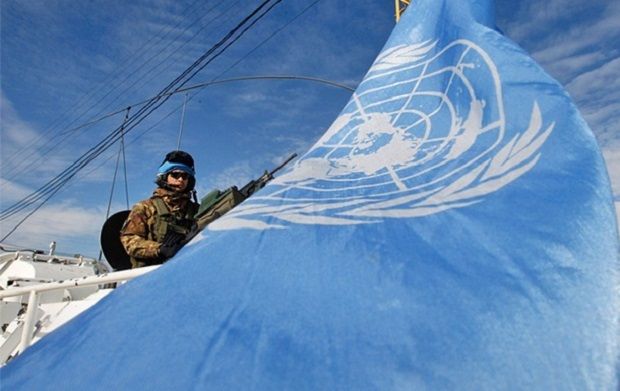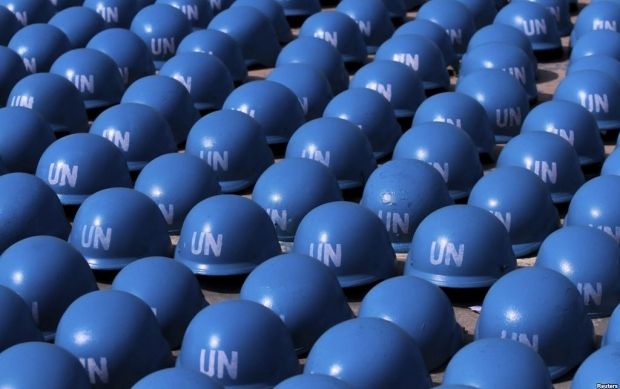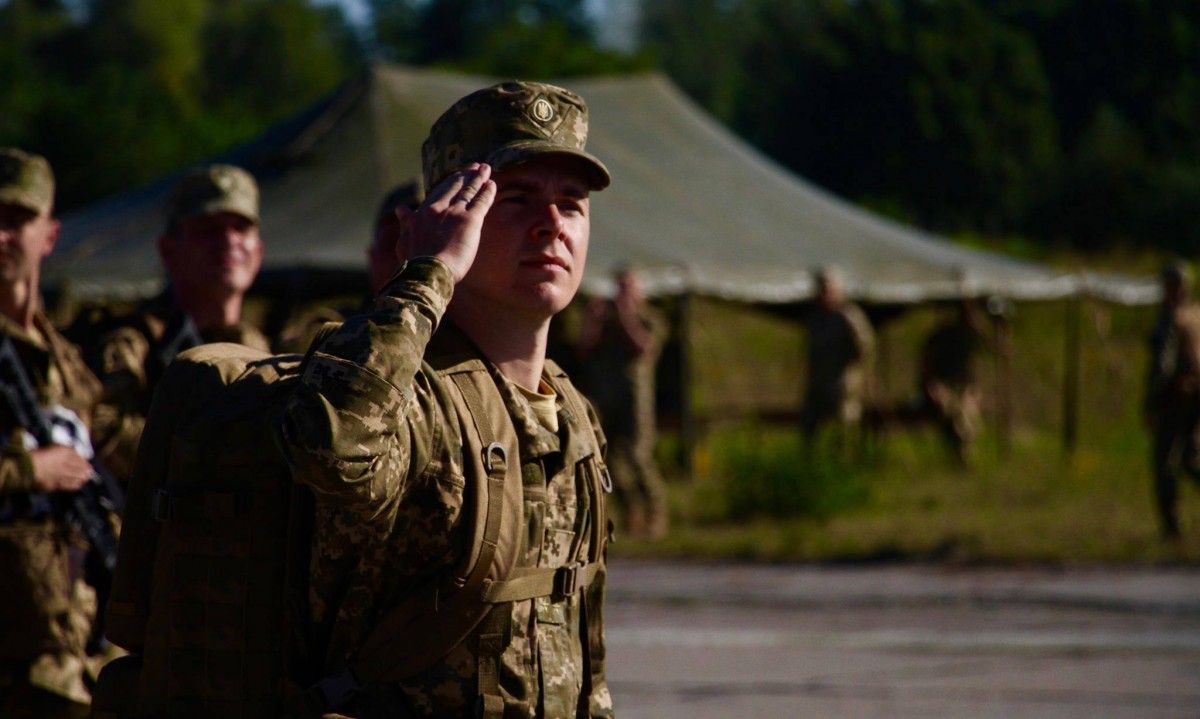
Ukrainian peacekeepers: maintaining peace in foreign land while war rages in Ukraine
Discussing the topic of international peacekeeping missions at a meeting of the UN Security Council, Ukraine has confirmed its continued active participation. UNIAN figured out what peacekeeping missions our country supports and whether it is possible to urgently return Ukrainian peacekeepers, these experienced troops, to protect their own homeland, if such urgent need arises.
At a meeting of the UN Security Council on November 7, Ukrainian Minister of Foreign Affairs Pavlo Klimkin said that our country sees great importance in the UN peacekeeping efforts, as it is one of the key objectives of the organization.
"Ukraine as one of the leading European troop-contributors to UN peacekeeping operations is proud to be a part of this important endeavor of the Organization. Despite the ongoing aggression launched against Ukraine, we will continue our active participation in the UN peacekeeping activity," Klimkin said.
Indeed, according to the response of the Defense Ministry to the the UNIAN request, since 1992, the date of dispatch of the first Ukrainian battalion under the auspices of the UN in Sarajevo, the Ukrainian peacekeepers put Ukraine on TOP 4 of the European countries that provide its peacekeeping forces (after Italy (1,114 peacekeepers), France (867), and Spain (613)).
Guarding other countries’ peace
The Defense Ministry reported that today the Armed Forces of Ukraine are taking part in 10 international peacekeeping and security operations under the aegis of the UN and NATO, and as part of the joint peacekeeping forces: in the UN Stabilization Mission in the Democratic Republic of the Congo, Liberia, the UN Operation in Côte Ivoire, the UN mission in the Republic of South Sudan, also being part of the United Nations interim force to ensure security in Abyei, the UN mission in Kosovo, the United Nations peacekeeping force in Cyprus, NATO operations in Kosovo, training and advisory mission of NATO in the Islamic Republic of Afghanistan, and the joint peacekeeping forces in the security zone of the Transnistrian region of the Republic of Moldova.
As of September 2016, these missions involved 269 officers and 237 soldiers of the AFU - contract privates, sergeants and petty officers of, with 22 of them carrying out tasks of military observers in peacekeeping missions under the UN aegis.
Maintaining a peacekeeping contingent is not a cheap endeavor. In 2014, about $340 million of public funds was allocated for this purposes, in 2015 it was $520 million. However, the UN Secretariat compensates for these costs: about $406 million was paid in 2014, and in 2015 – another $830 million. The amount of reimbursement exceeds the investments, as it includes an additional factor for the restoration of Ukrainian equipment after its use in the UN missions.

Ukraine's participation in NATO-led operations (national contingents in Kosovo, Serbia, and the national staff as part of the training-consultative mission in Afghanistan) is not refunded by the Alliance. Besides, budgetary costs on missions under the aegis of NATO are not made public. But judging by the salaries of our military – ranging from $1,860 to $2,710 per month for lower ranks, and from $2,850 to $3,300 for senior officers, it costs the taxpayers a lot.
In addition to soldiers, our military equipment is also involved in peacekeeping missions. The equipment, so often lacking in the area of the ATO. According to the Defense Ministry, the national contingents have four Mi-24 combat helicopters, 10 transport helicopters Mi-8, one BRDM (armored reconnaissance and patrol vehicle), 94 motor vehicles, and 40 trailers. All equipment is in good technical condition. Its renovation and modernization is carried out by the Ukrainian state-owned enterprises paid for from the public funds. But, again, the restoration is laid down in the amount of compensation for its use by the United Nations.
It is worth noting that, according to the Defense Ministry, in December 2014, in the framework of cutting the missions, 34 vehicles and three trailers were returned to Ukraine from the national contingent of multinational forces in Kosovo and Serbia.
In addition, in 2014 – 2016, the 56th separate helicopter detachment of the UN mission in Liberia was also cut. Three Mi-24 combat helicopters, two Mi-8 transport helicopters were withdrawn, as well as 14 motor vehicles and three armored vehicles. And until the end of November, it is planned to return to Ukraine another Mi-8 transport helicopter.
Responding to an UNIAN question whether this equipment will be used in the ATO zone, the Defense Ministry said: "In case it is needed..."
Returning personnel and equipment back to Ukraine
But is it possible to return peacekeepers as a significant reinforcement for the army “in case it is needed”? What is the procedure in general, and is it really necessary?
Director of military programs at Razumkov Center Mykola Sungurovsky believes that considering the return of the Ukrainian peacekeepers is necessary according to the situation in each individual case, on the case by case principle. In particular, he cited the example of Georgia, where during the conflict with Russia, the country returned its peacekeepers. "These were combat troops, but we have no combat peacekeeping units, as such. We have helicopter detachments, and we actually can discuss their return. But it had to be done back in 2014. Now it will not change the situation," he said.

In addition, he said that in order to return the peacekeepers, "it is necessary to notify the UN Security Council, particularly the department that deals with peacekeeping missions". "This is a fairly complicated procedure. If you do that, you need to do it in advance," said Sungurovsky.
If we talk about the return of the peacekeepers as a training contingent, Ukraine does not need that, according to military expert Serhiy Zgurets. According to him, these professionals are required to control the border, confront the illegal movement of Russian military equipment and weapons into Ukraine. But it is unlikely that we could return them to their homeland.
"We do not need peacekeepers as a teaching contingent because we have enough of our own military to perform these functions, with relevant expertise gained in the fighting against the Russian Federation. But if the peacekeepers appear on the border to prevent the movement of weapons and equipment from the Russian side, I will welcome it. But such a decision should be made at the UN level. Naturally, Russia will block it exercising its veto right, therefore the appearance of peacekeepers in the ATO zone is very unlikely," says Zgurets.
By the way, the UN High Commissioner for Human Rights Zeid Ra'ad Al-Hussein called for the restriction of the right of veto by the permanent members of UN Security Council on the issues of war crimes, crimes against humanity and genocide. But the United States and Russia voted against this move.
Enough forces without peacekeepers
Not so long ago, the sixth wave of demobilization ended in Ukraine. The citizens drafted in 2014-2015 to protect the country from Russian aggression returned home. And in the Ministry of Defense believes that there is no need today for another wave of mobilization, which was confirmed by the Ukrainian president. Both the defense ministry and the head of state see the opportunity to use only contracted soldiers and volunteers.
Zgurets believes that from the current perspective, this approach is quite reasonable.
According to Sungurovsky, the seventh wave of mobilization is possible in case of resumption of large-scale Russian aggression, but mobilization will be quite different than the previous ones. "Now the Armed Forces believe they have created a sufficient reserve of trained personnel. That is, no additional mobilization is required now. The only thing that remains in place is the next stage of a regular draft," said the expert.
Indeed, since the beginning of the year, more than 50,000 troops have been contracted. As stated in the comments to the media by First Deputy Defense Minister Ivan Rusnak, this made it possible to fill with personnel all military units that pass the appropriate level of training on the ranges. Then, according to the plan of the General Staff of Armed Forces of Ukraine, there will be a rotation in the ATO zone.
As for the conscripts, according to the Defense Ministry, during the autumn campaign it is planned to draft about 14,000 soldiers. The Ministry assured that they would serve at the bases away from the conflict zone.
Anyway, being aware of what the enemy is capable of, we cannot rule out the emergence of new hot spots in the east. Moreover, according to the latest reports of the Ukrainian Intelligence, the Kremlin continues to create a full-scale military grouping on the border with Ukraine, amassing more equipment and weapons. Therefore, while the participants of the Normandy format discuss the likelihood of deployment of the OSCE armed police mission in Donbas, nothing should keep us from considering in advance the possibilities of the return of our warriors deployed around the world.
Nana Chornaya

